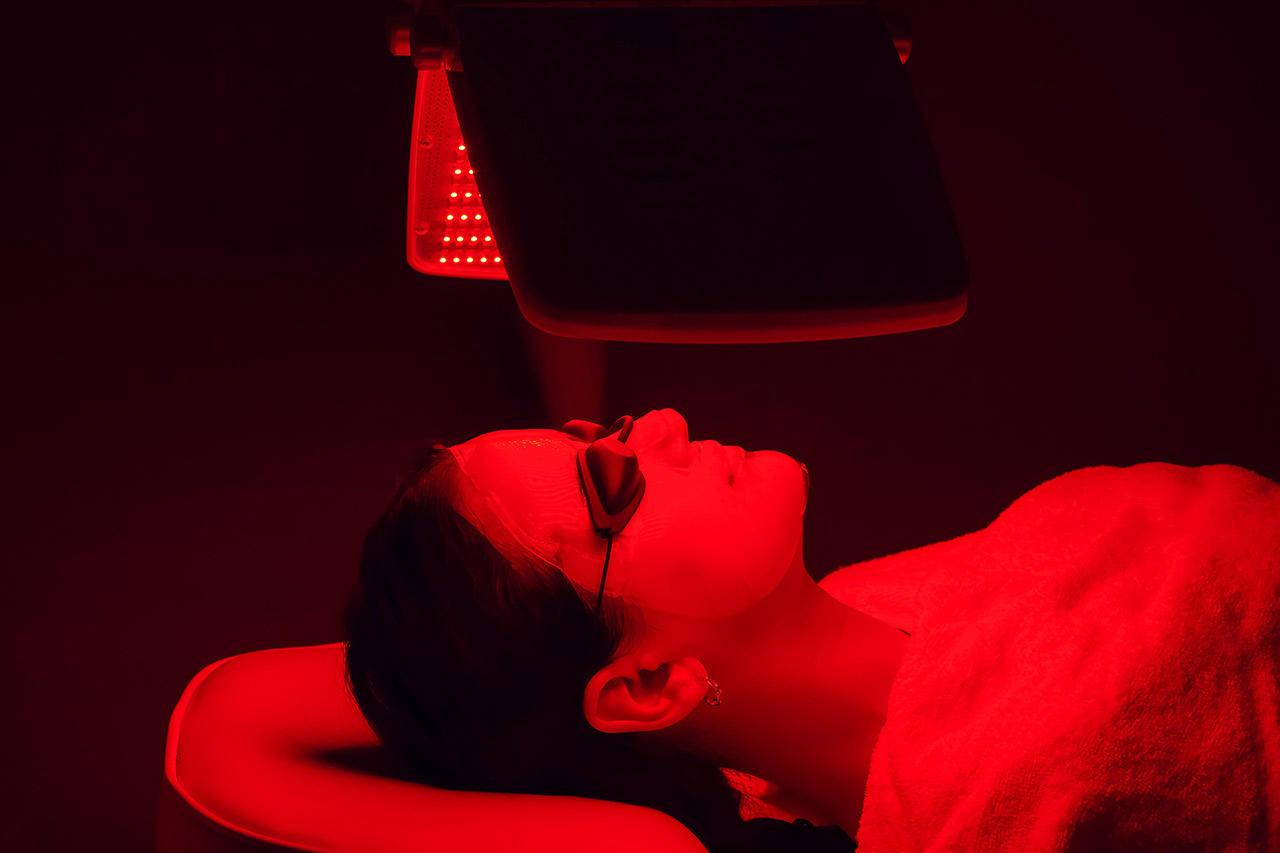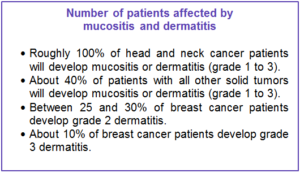Photobiomodulation therapy: the power of light

Photobiomodulation could reduce some of the side effects of cancer treatments such as mucositis and dermatitis. Doctors have high hopes for this new therapy, although they are waiting for a proof of efficacy and tolerance. Moreover, photobiomodulation has a large potential, as this procedure is not limited to oncology.
Photobiomodulation, a new therapy to treat side effects in oncology
Photobiomodulation (PBM), also known as LLLT for Low Level Light Therapy, consists of the application of so called low level lasers to human body tissue. The use of this type of laser has been shown to reduce pain and improve cell function by inducing tissue healing. Among other applications, photobiomodulation could be used to prevent and treat mucositis and dermatitis caused by chemotherapy and radiotherapy. Even if some oncologists are still skeptical about this technique as there is no conclusive evidence on the effectiveness of PBM in wound care yet, many of them see PBM as a potential solution for treating the above side effects.
There are only few treatments of mucositis and dermatitis after radio- or chemotherapy
 There are about 40,000 to 160,000 new cases of mucositis per year in France, with different degrees of severity (from grade 1 to 3). The probability of developing mucositis or dermatitis depends on the doses of radiotherapy or chemotherapy, which vary according to the associated cancer. In addition, it depends on the patient’s anatomy and initial health conditions. But on average, about 40% of patients receiving chemotherapy or radiotherapy develop mucositis or dermatitis, with a higher risk in patients receiving radiotherapy.
There are about 40,000 to 160,000 new cases of mucositis per year in France, with different degrees of severity (from grade 1 to 3). The probability of developing mucositis or dermatitis depends on the doses of radiotherapy or chemotherapy, which vary according to the associated cancer. In addition, it depends on the patient’s anatomy and initial health conditions. But on average, about 40% of patients receiving chemotherapy or radiotherapy develop mucositis or dermatitis, with a higher risk in patients receiving radiotherapy.
The available treatments against these side effects are mainly based on curative topical and anti-inflammatory treatments. In addition, when the lesions are serious, radiation therapy must be suspended, which occurs in 10% of patients.
It is clear that the currently available treatments need to be improved and oncologists are actively seeking new solutions.
Use of PBM in treating mucositis and dementia
Today, photobiomodulation is still at a very early stage. Although many healthcare centres say that they would like to to test the technology, only 15 centres in France regularly use PBM in clinical practice. In addition to proving its effectiveness, doctors expect this medical technique to fulfill the following criteria before considering it for routine use:
– Above all, PBM must be able to produce measurable and repetitive results.
– It must be well tolerated: no unexpected toxicity should be generated during PBM sessions.
– It must be easy to use for operators and patients.
– Qualified paramedical staff will be responsible for supervising PBM sessions.
Additionally, photobiomodulation can be used prophylactically before any side effects appear. All centres that intend to equip themselves with a PBM device should have a dedicated room for this task, with multiple devices available to treat several patients simultaneously and with a caregiver trained to be responsible for the medical device and to assist patients during the treatment.
Other applications of photobiomodulation
“Now in the testing phase, PBM could be an attractive solution to improve the well-being of patients undergoing oncologic treatments, and thus increase the associated compliance. The full potential of photobiomodulation has yet to be explored. The list of applications is still in its early stages” according to Xiaolin Liu, project manager at Alcimed.
Today, photobiomodulation is already used as a treatment for different indications in dermatology (for example against skin problems such as acne, psoriasis, eczema…) in ophthalmology (to treat a variety of retinal conditions) and against neurodegenerative diseases.
Do you have an exploration project?
Our explorers are ready to discuss it with you